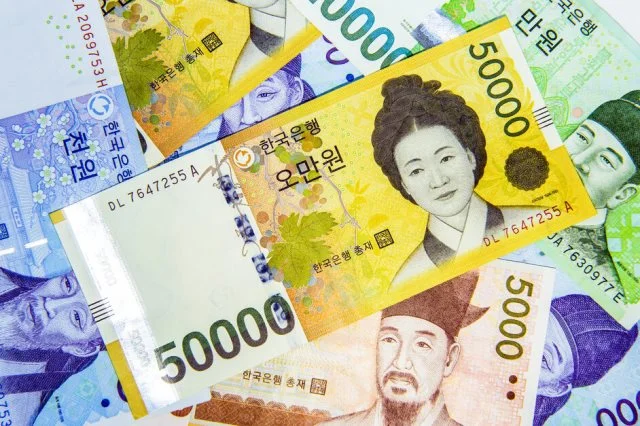Currency mart rates play a pivotal role in global financial transactions, impacting everything from international trade to travel expenses. One worldwide conversion that garners sustentation is from South Korean Won (KRW) to United States Dollars (USD). In this article, we will delve into how to convert 24727600000000 krw to USD, a massive icon representing trillions of Korean Won, and the various economic forces that influence such conversions.
Understanding Currency Conversion: 24727600000000 krw to USD
Before diving into the conversion process, it’s important to understand what ways to convert 24727600000000 krw to USD. Mart rates fluctuate constantly due to various factors such as economic performance, political stability, and global market dynamics. The South Korean Won is the official currency of South Korea, while the US Dollar is the most widely used currency globally for international trade and finance.
Current Mart Rate
As of the most recent update, the mart rate of KRW to USD is approximately 1 USD = 1,300 KRW. This icon changes daily based on market conditions, inside wall policies, and geopolitical factors. To summate how much 24727600000000 krw to USD, we use the current mart rate.
The Conversion Process
The conversion formula for any currency is simple:
Amount in USD = Amount in KRW ÷ Mart Rate
For this case:
Amount in USD=1,300KRW/USD24,727,600,000,000KRW
Performing the calculation:
Amount in USD=19,021,230,769.23USD
Performing the calculation:
Amount in USD=19,021,230,769.23USD
Thus, 24,727,600,000,000 KRW equals approximately 19.02 billion USD, based on the current exchange rate of 1 USD = 1,300 KRW.
Factors Influencing KRW to USD Mart Rates
The mart rate between KRW and USD is influenced by various factors. To understand the magnitude of such a conversion, it’s essential to explore these factors in detail:
Economic Stability
South Korea’s economy plays a crucial role in determining the strength of the KRW. With a highly ripened economy driven by exports, particularly in technology and automobiles, the value of the Won is unauthentic of how these sectors perform. If South Korea’s economy shows signs of growth, the KRW may strengthen versus the USD, making the conversion increasingly favorable for KRW holders.

In contrast, the US economy, stuff one of the largest and most influential in the world, affects the value of the dollar. If the US economy is strong, demand for USD increases, leading to a higher mart rate (i.e., increasingly KRW required for each USD).
Interest Rates and Inflation
Interest rates set by the inside banks of both South Korea (Bank of Korea) and the United States (Federal Reserve) are key factors in determining market rates. If South Korea raises its interest rates, it could vamp foreign investors looking for higher returns, which would increase demand for KRW, thereby strengthening the currency.
Inflation moreover affects currency values. If South Korea experiences higher inflation than the US, it may devalue the KRW relative to the USD considering the purchasing power of KRW would decrease, leading to a weaker mart rate.
Political and Geopolitical Events
Political stability and government policies play a role in currency mart rates. South Korea is located in a geopolitically sensitive region, with tensions occasionally flaring on the Korean Peninsula. Such events can rationalize volatility in the KRW as investors may move their resources to safer currencies like the USD in times of uncertainty.
Similarly, international relations, trade agreements, and political decisions in the US can stupefy the USD’s value, impacting the KRW to USD conversion rate.
Market Speculation and Foreign Investment
Currency traders and investors in the global forex market speculate on future currency movements, which can rationalize fluctuations in mart rates. South Korea’s position as a leading exporter of electronics, machinery, and chemicals often makes its currency a subject of market speculation. Additionally, when foreign investment flows into South Korea, it increases demand for KRW, potentially appreciating its value versus the USD.
Historical Trends: KRW to USD
The KRW to USD mart rate has seen considerable changes over the past decades, reflecting broader economic and geopolitical developments. Here are some key historical points to consider:
- Asian Financial Slipperiness (1997-1998): During the Asian financial crisis, South Korea faced a severe economic downturn, and the KRW lost significant value versus the USD. At one point, the mart rate surpassed 1,700 KRW per USD.
- Global Financial Slipperiness (2008-2009): The global financial slipperiness moreover impacted South Korea, causing the Won to depreciate as investors sought safe-haven currencies like the USD. The mart rate during this period peaked at virtually 1,500 KRW per USD.
- Recent Trends (2020s): In the 2020s, the KRW to USD mart rate has been influenced by the COVID-19 pandemic, supply uniting disruptions, and changes in global economic policy. The mart rate has fluctuated between 1,100 to 1,400 KRW per USD, depending on market conditions and economic performance.
Practical Uses of Converting 24727600000000 krw to USD
Understanding large currency conversions like 24727600000000 krw to USD is important for several real-world applications, expressly in business, finance, and international trade.

- Corporate Transactions
For multinational corporations, particularly those operating in South Korea and the United States, converting large sums of KRW to USD is a routine task. South Korean companies involved in global industries such as Samsung, Hyundai, and LG commonly convert currency to pay for imports, settle foreign debt, or repatriate profits. - Government Reserves and International Aid
Governments and financial institutions may convert large sums of KRW to USD for various purposes. For example, South Korea’s inside wall may use its reserves to stabilize the currency market or engage in international aid programs that require currency exchange. - Investment in Global Markets
Investors converting KRW to USD is the flipside key zone of focus. South Korean investors may invest in US stocks, bonds, and other financial instruments, requiring large-scale currency conversions to take wholesomeness of international opportunities.
Conclusion
Converting 24727600000000 krw to USD yields approximately 19.02 billion USD at the current mart rate. Understanding the factors that influence this mart rate, from economic stability to interest rates and geopolitical events, is crucial for businesses, investors, and individuals engaged in cross-border financial activities.
In a globalized economy, large-scale currency conversions like this underscore the importance of staying informed well-nigh mart rate trends, as fluctuations can have significant financial implications for countries, corporations, and investors alike. Whether you are conducting international trade or planning a major investment, staff enlightened of the economic forces at play can help you make the largest decisions when it comes to currency exchange.







